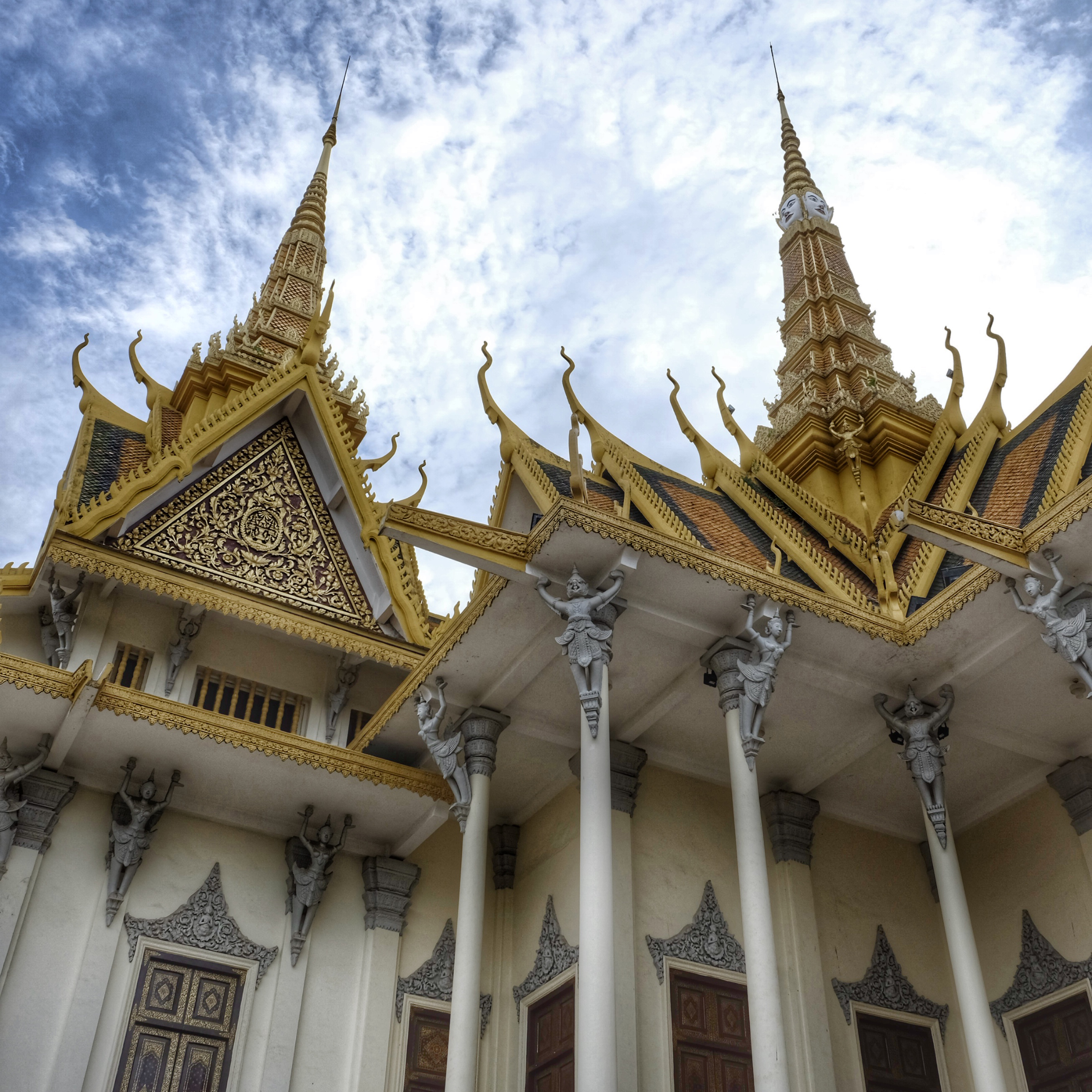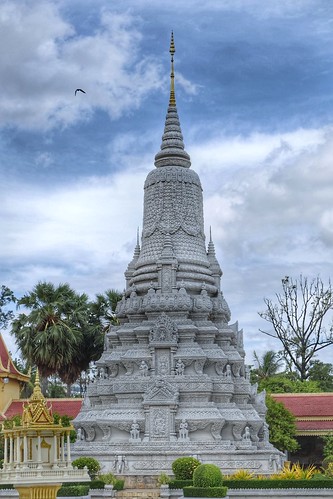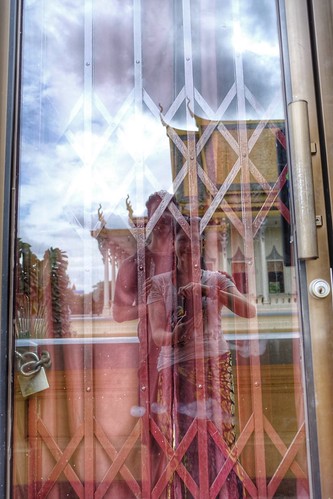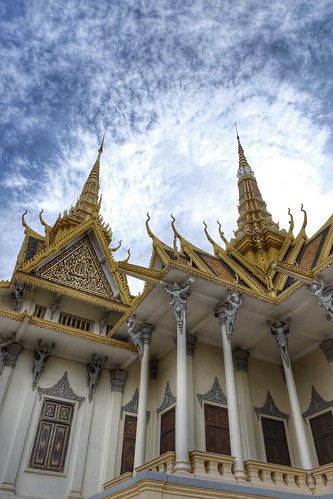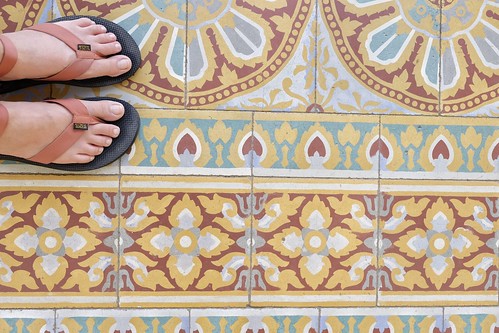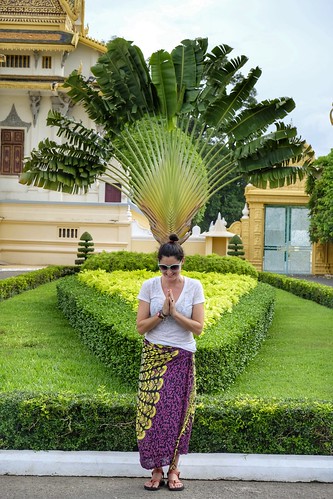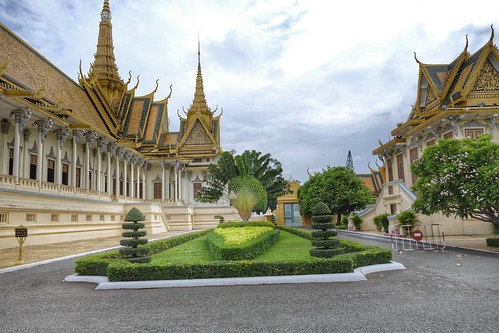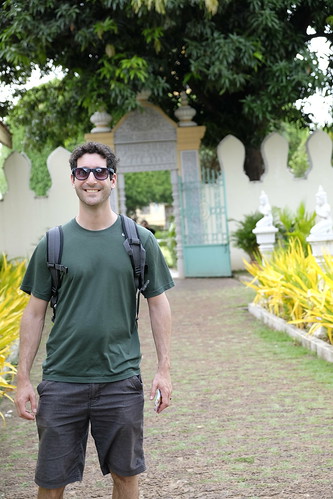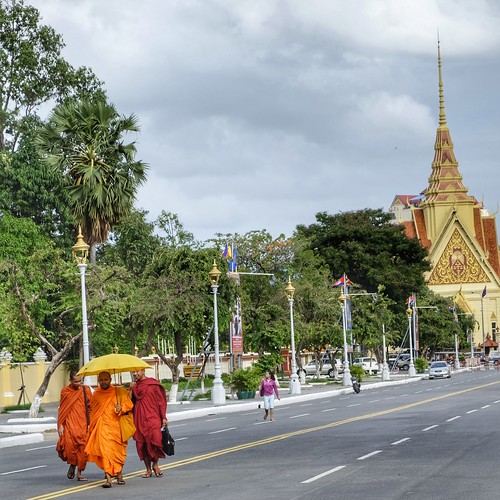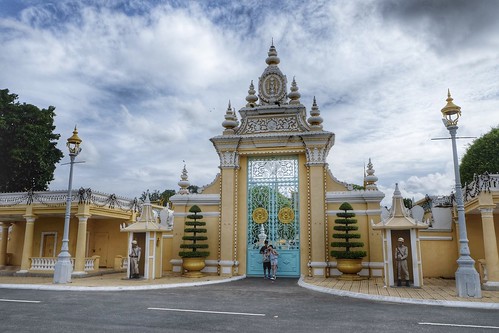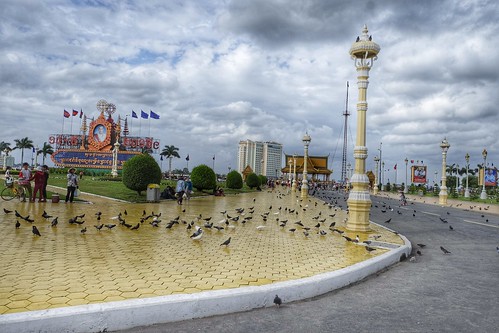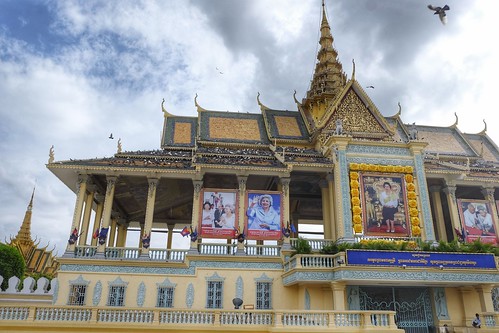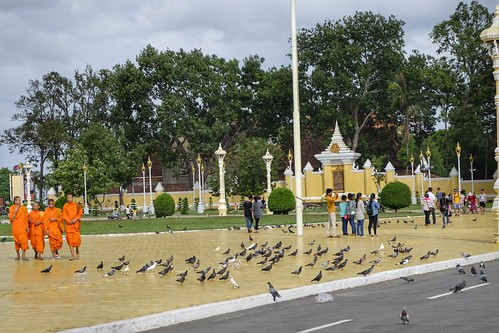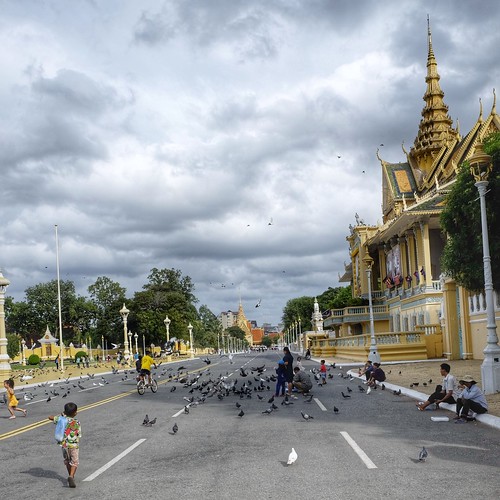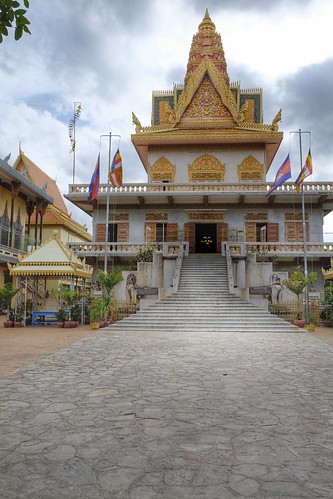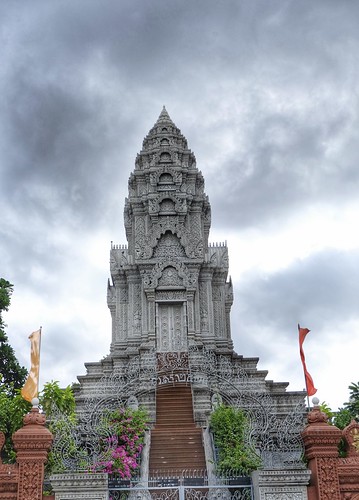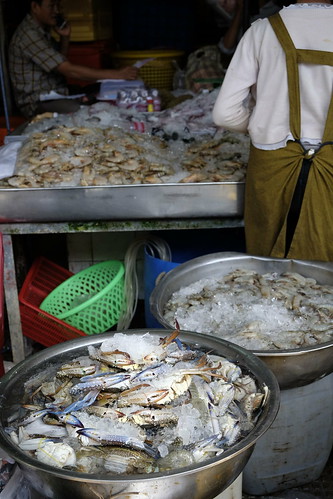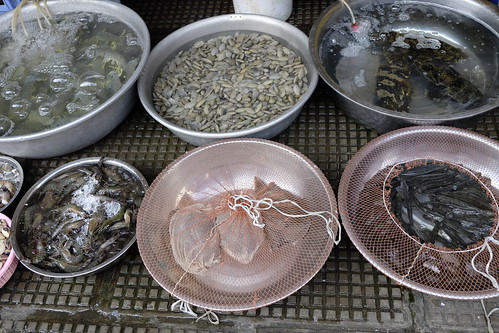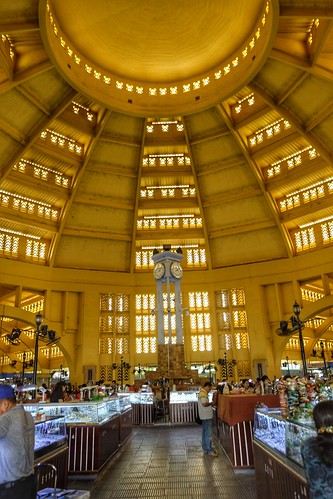* We were in Phnom Penh, Cambodia from June 24-25 & 29, 2015
This post is a bit graphic, not for the faint of heart.
Our 2 days and 3 nights in Phnom Penh were hands down the most emotional, eye-opening, and simultaneously sad and uplifting experience of our trip.
And it all starts with recent history, and a visit to one of the Killing Fields. In 1975, after a 5-year civil war, a communist faction called the Khmer Rouge, led by the infamous Pol Pot (and backed by the victorious Northern Vietnamese) prevailed. But Pol Pot’s strain of communism was nothing like that of the USSR or even the Northern Vietnamese. He sealed off the borders (much like North Korea these days) and literally marched everyone out of every city, including the capital Phnom Penh, to become collective farmers. Once bustling cities became ghost towns only sparsely populated by the regime’s elite and the military. In the process, the genocide began. Pol Pot was insanely paranoid and quickly killed off pretty much anyone who could possibly be a threat to the new agrarian society he created. One of his most well known mottoes was, “Better to kill an innocent by mistake than spare an enemy by mistake.” And he held to this motto more than anyone could imagine in his/her worst nightmares. All intellectuals were viewed as threats and killed, including doctors, teachers, lawyers, engineers and scientists. People who wore glasses were assumed to be intellectuals and were killed. And their families were killed too to prevent their kids from later being able to seek revenge. Many used the opportunity to report people they disliked as “intellectuals” to have them and their families imprisoned and killed. Later in his regime, as his paranoia grew, Pol Pot started executing members of his own party, always afraid of a coup being just around the corner. The Killing Fields were where many of the mass executions took place.
We hired a tuk tuk for a full day to visit one of the Killing Fields as well as the Tuol Sleng Genocide Museum on the site of Security Prison 21. The prison used to be a high school, but because the Pol Pot regime did away with education, it better served them as a prison. There, thousands of people were tortured and malnourished along with their families, and if they managed to make it through the horrifying prison conditions, their next stop was a Killing Field.
The Killing Fields were a series of areas in the countryside just outside of the main cities where those “convicted of espionage” were sent for their execution. The Khmer Rouge didn’t have many guns or bullets, so they would often use machetes, shovels or rocks to kill the prisoners and then bury them in mass graves. You’ll see in one of our pictures there is a sign next to a tree, on the bark of which was found skull and hair fragments from infants and toddlers, where they were smashed to death. Yes, smashed to death. The memorial also had a display of some of the excavated skulls sorted by likely apparatus of death, based on the visible skull fractures. But most of the estimated 2 million Cambodians killed during the regime remain buried. You are actually told to be careful where to walk there, because if you look closely, you’ll see erosion in certain area is beginning to expose unexcavated bone and clothing fragments.
The Pol Pot and the Khmer Rouge regime came to an end ironically at the hands of Northern Vietnam who originally put them in power. But from 1975-1978, the Khmer Rouge systematically killed any Northern Vietnamese representatives they could get their hands on, so in 1978, Northern Vietnam invaded and ousted the Khmer Rouge from power. In less than 4 years, roughly 1 out of every 4 Cambodians had died either from being killed by the regime or from malnourishment.
The aftermath is still starkly apparent in the city of Phnom Penh. After the liberation, people returned to the cities and just started occupying whatever property was available. Shanty shack homes were built on top of existing buildings, making a strange architectural juxtaposition, with some homes seemingly extended out from doorways into the streets by just adding aluminum roofing to poles.
Almost the entire educated population had been killed off and what remained was a population of country farmers. No one remained to teach any practical technical skills, such as engineering, medicine, or even carpentry. And it wasn’t until the 90s that the country was able to shed its Vietnamese puppet regime, stabilize to some extent, and open up to the international community. In recent years, the international community has responded, starting to inject money and talent into the country to try to reverse the tremendous damage that was done.
But they still have a LONG way to go. They don’t have enough skilled labors or even the teachers to help create those needed skilled laborers. Homelessness and poverty are regular parts of life there. It’s not uncommon to see kids sitting on the curb huffing glue out of paper bags, and garbage (often with a stench) is everywhere. During our tuk tuk ride, we literally had to hold our breath every time we crossed a bridge over a stream so as to not gag from the pungent stench of sewage. Prostitution is a major problem, and maybe the biggest tourist attraction of the city. And the least of these problems is the high pollution from lack of car emission standards.
But despite everything that has happened, and the current condition of the country, everyone we met was incredibly friendly and smiling, even the vendors trying to sell us cooked bugs from street carts (see picture). And although we had to be alert, crime is not any more prevalent than in many of the other places we visited. The food was surprisingly fantastic too.
Obviously Phnom Penh is a city in transition, and they are trying to rebuild and piece back a society shattered by the Khmer Rouge and Pol Pot regime (in fact, the members of the Khmer Rouge regime are still standing trial for their war crimes). But we saw through our experiences in Siem Reap and all of the tourist money they get, what Phnom Penh was, can, and will eventually become again.
Phnom Penh Highlights…
- We walked along the river and visited the Imperial Palace grounds to see the Silver Pagoda. You’ll see most of our pictures were taken there. It was a little weird to see the inside of the pristine palace grounds, outside the walls of which were pockets of homeless encampments and sporadic shanty town looking buildings.
- We visited the Psar Thmei Market which was actually a really well organized and clean market compared to a lot of SE Asia, which was kind of ironic.
- Our hotel was in a great location in terms of being walkable from the river and the popular restaurants in town, but it was a surprise to us that we found it was located on a total red light district street. It’s hard to avoid that though in Phnom Penh, as sex tourism is very popular. But we were literally surrounded by bars with scantily clad young girls lingering outside, so we figured if we couldn’t beat ‘em, might as well join ‘em, or at least see what it was all about. We decided to go into a bar called Angry Birds for a drink. We were the only couple in there, and Lindsey was the only non-working girl in there. The girls kind of giggled at us and gave us some sort of dice game to play while we drank, and went back to flirting with the few white males, trying to make their sales pitch. Pretty disturbing, but just put it on the list of problems in Phnom Pehn.
- We ate at a restaurant whose staff works with street kids and train them to work in the hospitality industry called Romdeng; it also has a sister restaurant called Friends. I was so close to ordering the roasted spider dish, but didn’t pull the trigger. I guess everyone has some regrets in life.
